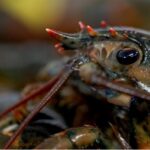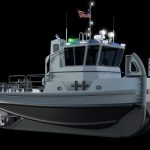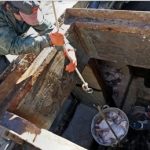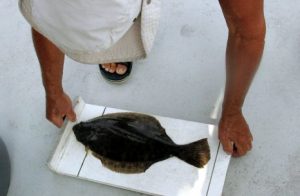Good Indicators for Capelin Health, Despite DFO’s Doubling Down on Doom and Gloom
 March 15, 2023 – ST. JOHN’S, NL – Following DFO’s technical briefing on the 2J3KL capelin stock today, fish harvesters are optimistic that more favourable environmental conditions could lead to stock growth. However, the tone of the assessment, and how DFO chose to set the Limit Reference Point for capelin, matches DFO’s overall approach of dogma-driven science assessments.
March 15, 2023 – ST. JOHN’S, NL – Following DFO’s technical briefing on the 2J3KL capelin stock today, fish harvesters are optimistic that more favourable environmental conditions could lead to stock growth. However, the tone of the assessment, and how DFO chose to set the Limit Reference Point for capelin, matches DFO’s overall approach of dogma-driven science assessments.
“FFAW-Unifor is not surprised with the tone of today’s technical briefing by DFO Science, which have been consistently negative, irrespective of the data,” says FFAW-Unifor President Greg Pretty. “DFO has admitted that capelin is a bottom-up driven stock, which means that a favourable environment is a key determinant of the stock’s health – not predation or fishing. Yet despite all of these favourable indicators, DFO Science does their absolute best to portray nothing but doom and gloom when it comes to any commercial fishery in our province,” Pretty says.
Increased productivity for zooplankton is a good indicator for capelin health, given that the capelin stock is a bottom-up driven species. This means that with increasing food sources available, DFO Science expects this to lead to increased growth of the capelin stock. When pressed, DFO Science admitted that the increased stock biomass in 2013 and 2014 was likely a result of more zooplankton and warmer waters. They also acknowledged that capelin were larger (fatter) in last year’s survey, another good indicator of the stock’s health.
“DFO Science is supposed to be an unbiased, transparent, and evidence-based in their approach. But most of them don’t spend more than a day on the water each year. They don’t see or appreciate the qualitative observations professional fish harvesters provide, and how we can support more robust and reliable data collection for capelin and other species. Instead of contributing to a productive relationship and more informed stock assessments, we have government scientists whose sole objective is to shut commercial fisheries down, regardless of facts,” says Dennis Chaulk, fish harvester from Bonavista Bay with over 28 years of experience on the water.
DFO Science set the Limit Reference Point (LRP) for capelin with consideration for northern cod, despite not doing so in any other species in Newfoundland and Labrador which are also part of the same ecosystem. This approach was not taken in other prey species like mackerel, northern shrimp and snow crab, and is inconsistent DFO’s Precautionary Approach used in other NL fisheries.
From the perspective of improving the current LRP, “FFAW-Unifor would like to see more priority given to understanding the capelin stock prior to the high levels of the late 1980s. We believe that empirical data, meaning data showing the levels from which stock recoveries have occurred, should be a key consideration in setting Limit Reference Points,” says Dr. Erin Carruthers, FFAW-Unifor Science Director.
Despite repeated requests, DFO has failed to capitalize on new survey opportunities to increase the amount of data contributed to the assessment process. Fish harvesters have repeatedly highlighted the important of off-beach spawning and have questioned whether DFO is tracking the increased importance of deep-water (demersal) spawning. When probed at today’s assessment update, DFO Science agreed that deep-water spawning sites provide recruits to the overall capelin biomass.
Overall, fish harvesters in Newfoundland and Labrador are optimistic about the capelin stock. However, concerns remain regarding the Department of Fisheries and Oceans and their capacity to adequately assess and manage important commercial stocks.
###
Courtney Glode (she/her)
FFAW-Unifor Communications
709-743-4445









































